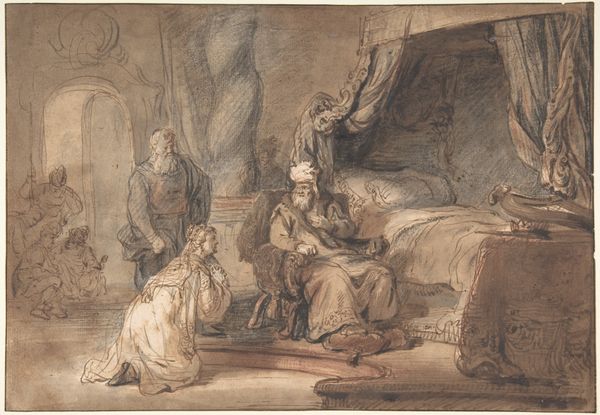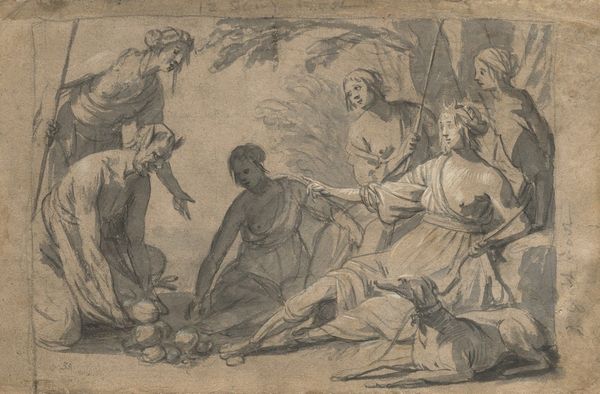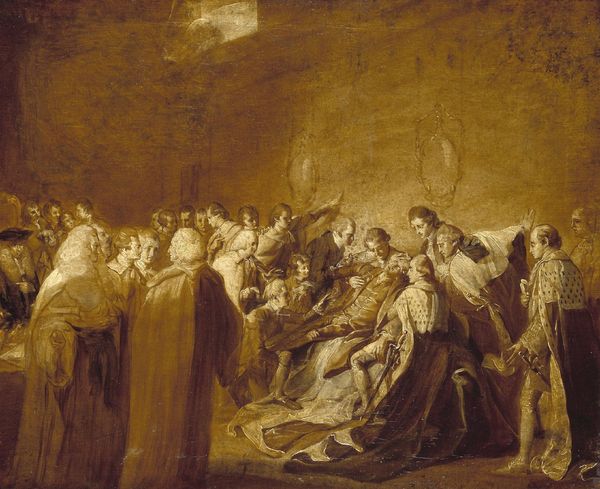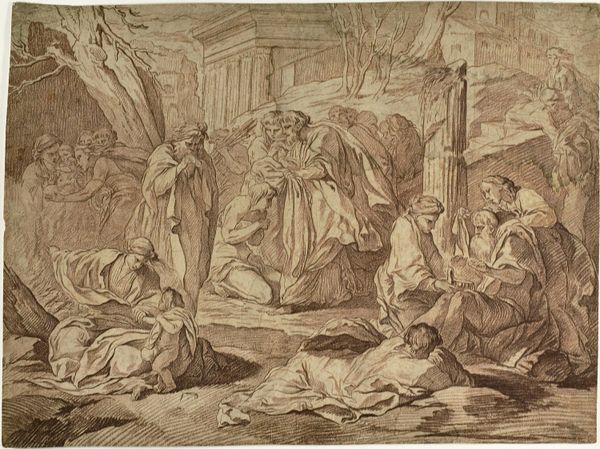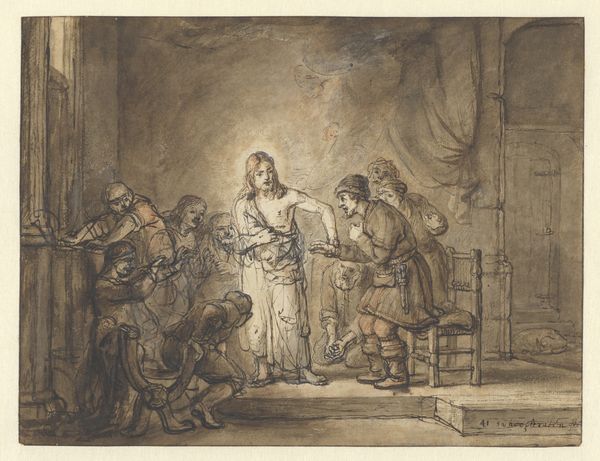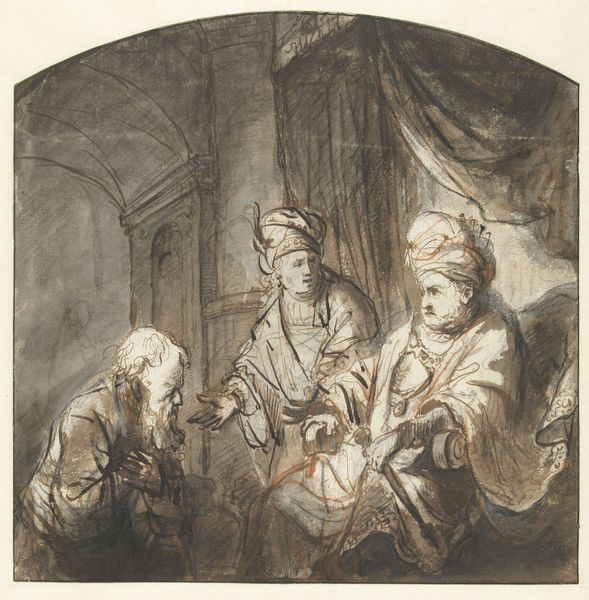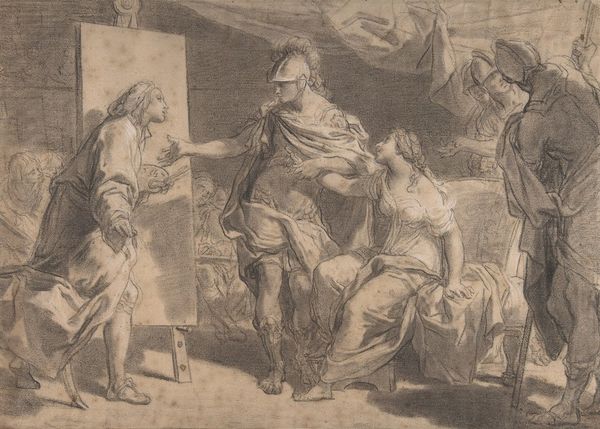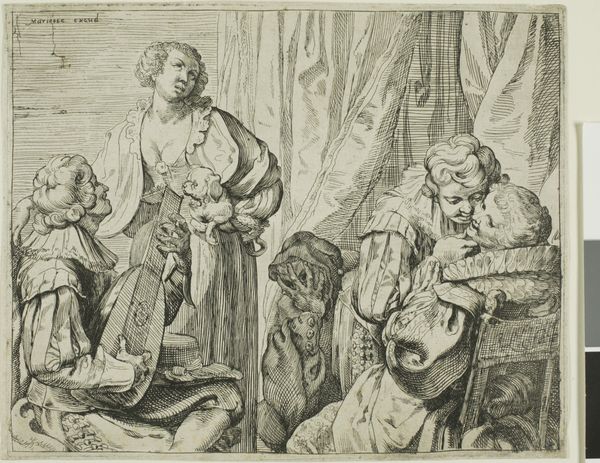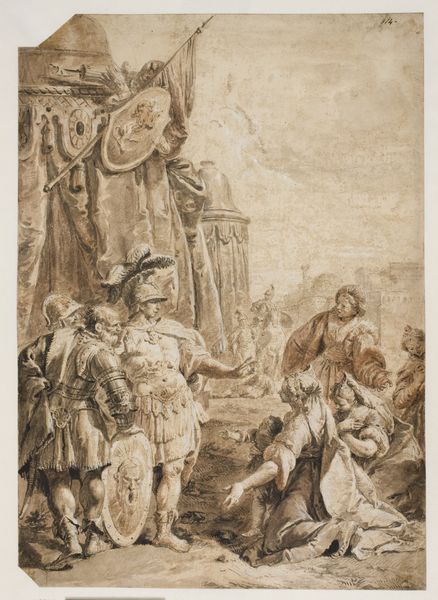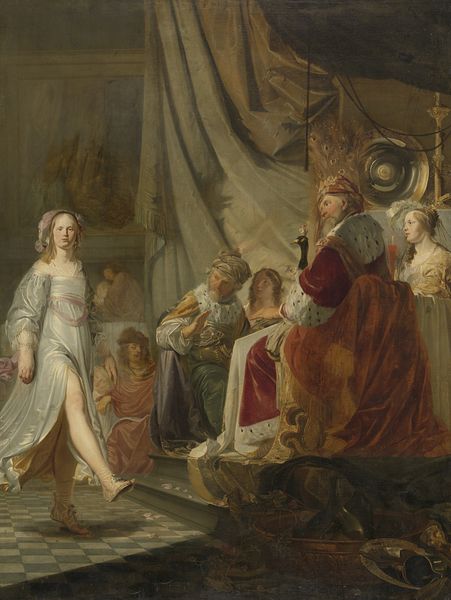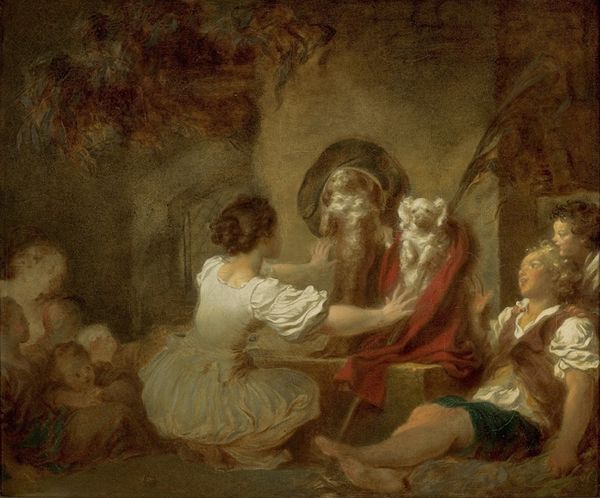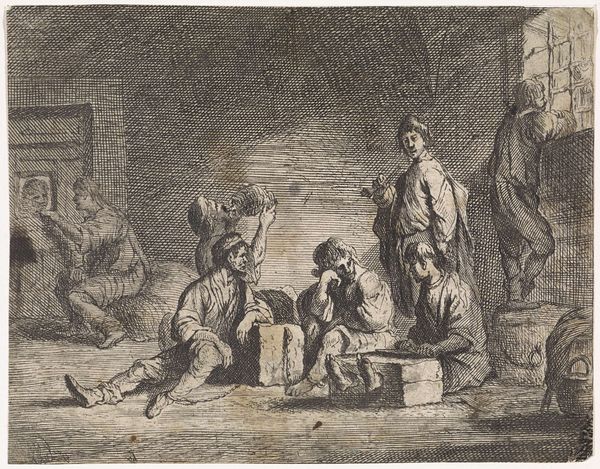
painting, oil-paint
#
portrait
#
narrative-art
#
baroque
#
dutch-golden-age
#
painting
#
oil-paint
#
charcoal drawing
#
figuration
#
oil painting
#
history-painting
#
charcoal
Copyright: Public Domain: Artvee
Editor: Here we have Rembrandt van Rijn's 1633 painting, "Joseph Telling His Dreams," crafted in oil. The atmosphere feels quite subdued and the colours are muted. What strikes you most about this piece? Curator: Well, viewing this through a historical lens, consider Rembrandt's ambition within the context of the Dutch Golden Age. Narrative painting, particularly biblical scenes, carried significant weight, often serving as a reflection of societal values. Does the staging here remind you of something? Editor: It’s almost theatrical, isn’t it? Like a play unfolding on canvas. Curator: Exactly. And this theatricality, typical of Baroque art, isn’t just about drama. It's also about power. The placement of figures, the lighting, everything serves to reinforce a specific interpretation of the biblical story. What story do you think the staging wants to tell us? Editor: That Joseph is set apart and divinely touched. It is certainly a strong composition. The dark palette also has symbolic undertones for the period I'm guessing? Curator: Yes, in Dutch Golden Age painting, the use of light and shadow - chiaroscuro - wasn't merely a stylistic choice. Here, darkness serves as both a backdrop and a comment on the unease and skepticism Joseph's dreams provoke. Think about who was commissioning works like this, what messages did they want to send and to what audience? Editor: I never really thought about the patrons so much. So by analyzing who these paintings were for and what they represented, we understand their societal impact. Thank you! Curator: Precisely. It's a constant cycle of influence. Analyzing all elements including the reception the work had after release, contributes greatly to the historical reading of the art. Editor: Absolutely. It really brings new meaning to the whole piece, looking at the full picture.
Comments
No comments
Be the first to comment and join the conversation on the ultimate creative platform.
